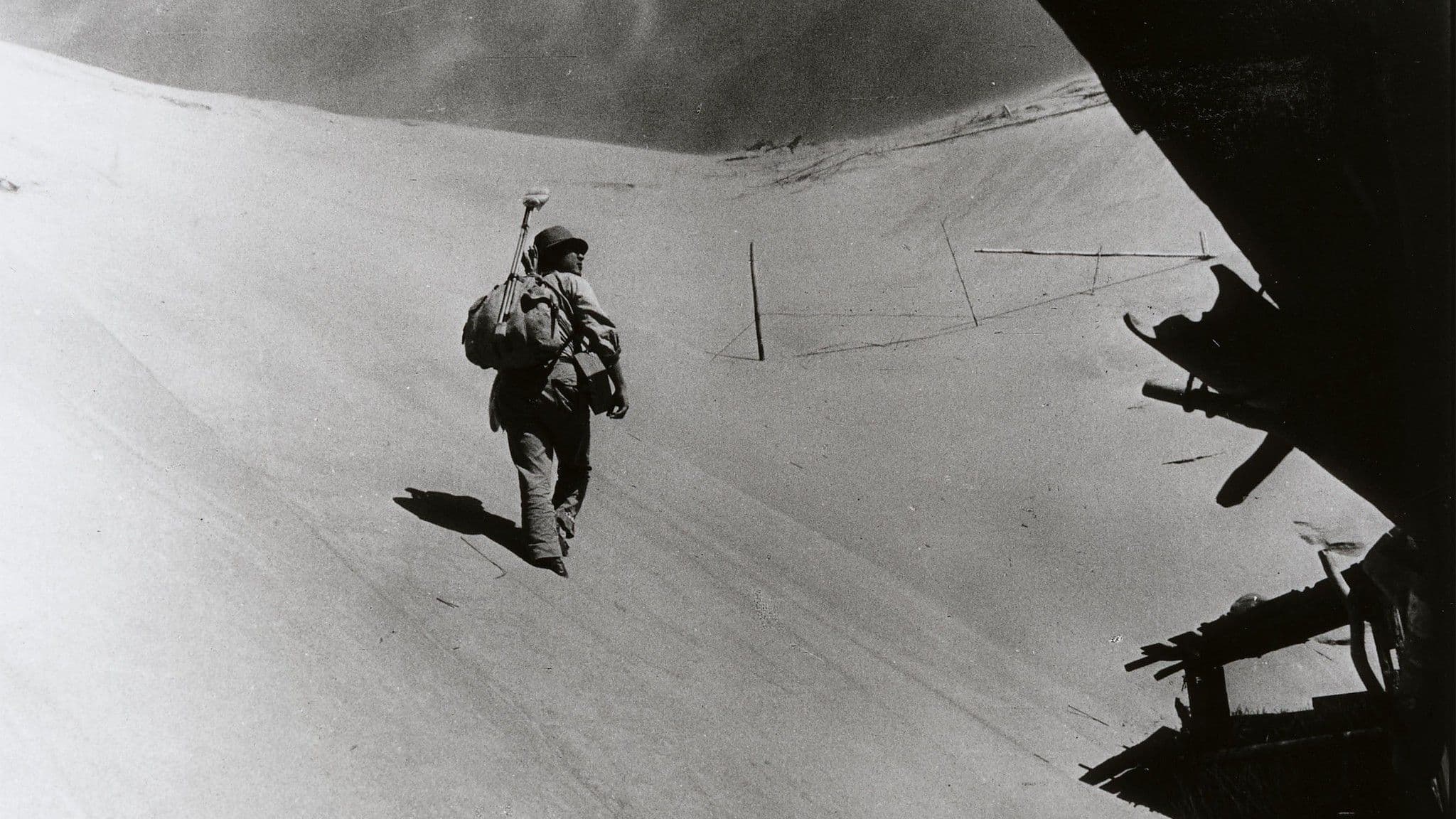
Woman in the Dunes
1964
Rate this movie
Average: 0.00 / 5
(0 votes)
Director
Teshigahara proves himself a talented master of surreal cinema, poised on the delicate threshold of iconographic conflict between mere appearance and vibrant metaphor. A mastery rooted not only in a revolutionary visual aesthetic but also in a profound blend of arts and intellects, forged by his enduring and fruitful collaboration with avant-garde writer Kōbō Abe and composer Toru Takemitsu. This titanic trio, often and culpably underestimated compared to the more overt clamour of the coeval Japanese New Wave – one thinks of Nagisa Ōshima's political furies or Shōhei Imamura's animality – carved out an autonomous cinematic language, a unique intersection of literature of the absurd, anthropological inquiry, and almost alien sonorities, which transcends definitions and labels, while remaining firmly rooted in a specifically Japanese perspective, imbued with mysticism and fatalism.
This work of his is but one stage in this strenuous stylistic-aesthetic quest that led the Japanese director through the very meaning of cinema, almost undermining its foundations to arrive at something genuinely new. A considerable undertaking, which falls within the ambit of bold experimentation and, in some respects, precursory to the existential malaise that would pervade much of subsequent auteur cinema. Teshigahara does not merely narrate a story; he dissects human nature, freedom, identity, and imprisonment, transforming the film into a philosophical laboratory.
The film's story centers on an uninspired premise in which a young entomologist arrives in a remote Japanese village to continue his research. But this is merely the surface, the narrative pretext for a much deeper and more unsettling immersion. His profession, entomology, is no accident: he is a scholar of minute life, of classification, of detached observation. Ironically, he himself will transform from observer to specimen, from scientist to guinea pig in a primordial experiment orchestrated by a nature as inscrutable as it is relentless.
He settles with a young widow, in a grotesque house situated at the center of a natural chasm accessible only via a rope ladder. This "grotesque house" is far more than a dwelling; it is a sandy womb, a tomb, a prison, and, at the same time, a place of revelation. The sand pit is not merely a scenic backdrop, but a character in itself: the sand, incessant and omnipresent, becomes a metaphor for time that erodes, for oblivion that swallows, for the Sisyphean labour that condemns one to eternal toil. Its perpetual flow, its grainy sound masterfully captured by Takemitsu's soundtrack, becomes the heartbeat of this claustrophobic universe, a symphony of anguish and inevitability.
Upon his awakening the following morning, the ladder has been removed, and there is no way out. This moment is the dramatic caesura, the point of no return, the allegory of a physical as well as existential imprisonment. The protagonist is stripped of his freedom, his bourgeois identity, his mental constructs. He finds himself catapulted into a Kafkaesque dimension, where the rules are unknown and escape is impossible, forced to confront the bare and brutal essence of survival. The removal of the ladder is the definitive severance of his link with civilization, a forced baptism into the heart of darkness of an existence reduced to its essentials.
From the moment of his entry into the house, the woman weaves a web of enchantment that engulfs the young scientist until he loses his mind. An atmosphere of scabrous malevolence mixed with vibrant sensuality surrounds the young man. The relationship between the two is never one-dimensional: it is not a mere tormentor-victim dynamic, but rather a mutual metamorphosis. The woman, creature of the sand, symbol of an ancestral cyclicality and wild resilience, first torments him, then seduces him, forcing him to confront his most basic instincts. Her "enchanting" influence is not witchcraft, but the primordial force of life that adapts, that digs, that survives. The man's "losing his mind" is perhaps less a descent into madness and more an initiation, a plunge into the unconscious that frees him from social conventions, revealing his true nature, that of an animal forced to accept its conditions. Nudity, toil, and sex are not merely erotic or dramatic elements, but stages in a process of divestment and rebirth.
A work where it is difficult to grasp the very meaning of reality, and it is precisely here that its fascination and greatness lie. The narrative offers no easy answers, it does not clarify whether what we see is a nightmare, a social metaphor, or a stark reality. Hiroshi Segawa's superb black and white cinematography amplifies this ambiguity, imbuing the landscape and bodies with an almost palpable tactile texture, made of grain, sweat, and sharp light. This film is not merely a story of imprisonment; it is a profound meditation on alienation, on the search for meaning in an indifferent universe, on nature's power to shape and destroy the individual. It is a work that, while intrinsically Japanese in its aesthetic and its contemplation of loss, resonates with great Western existentialist works, from Albert Camus with his Sisyphus condemned to eternal, futile labour, to Franz Kafka with his grotesque situations and no apparent way out.
A kaleidoscope of inferences in the form of images and sensations. Its power lies in its ability to get under the skin, to leave open questions that continue to torment the viewer long after viewing. It is a film that is slowly metabolized, that defies categories and that, ultimately, celebrates the incomprehensible strength of life even in its most extreme and inhospitable forms. Woman in the Dunes is not just a film, but a sensory and intellectual experience, a silent hymn to resilience and the terrible beauty of forced adaptation.
Unforgettable and unique, a timeless masterpiece that continues to dig tunnels into our perception of the real and the surreal.
Country
Gallery





Featured Videos
Official Trailer
Comments
Loading comments...